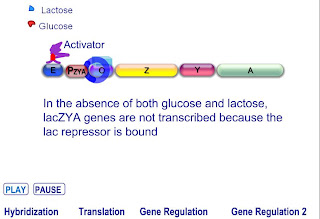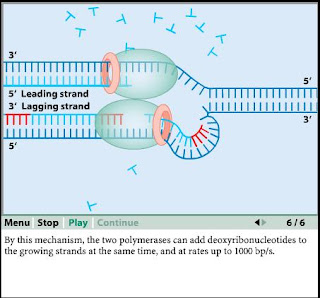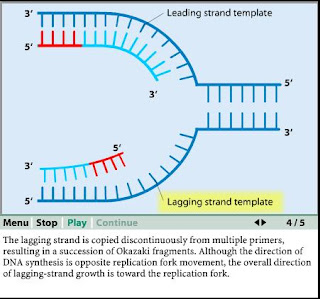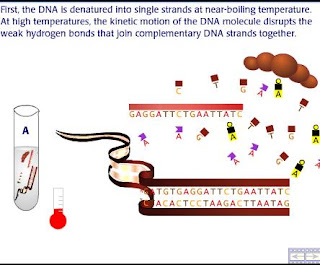Sunday, March 28, 2010
Saturday, March 27, 2010
Friday, March 26, 2010
Biochemistry::Hershey-Chase experiment
for the rest of the story>>>download the video:
Monday, March 22, 2010
Sunday, March 21, 2010
Saturday, March 20, 2010
Biochemistry: DNA replication (DNA Replication Fork)
When DNA replicates, the enzyme helicase separates the DNA strands. Single stranded DNA binding proteins keep the strands from re annealing>>>for the rest of the story;download the movie....
Friday, March 19, 2010
Thursday, March 18, 2010
Surgery: EX VIVO LUNG: Transplant surgeons at Toronto General Hospital make medical history
For the first time in the world, transplant surgeons, led by Dr. Shaf Keshavjee, used a new technique to repair an injured donor lung that was unsuitable for transplant, and then successfully transplanted it into Andy Dyksrta.
Dr. Keshavjee and his team have developed an ex vivo or outside the body technique capable of pumping a bloodless solution containing oxygen, proteins and nutrients into damaged donor lungs. This technique allows the surgeons the opportunity to assess and treat damaged donor lungs, while they are outside the body, to make them suitable for transplantation. To find out more about this research milestone, and others like it, visit www.tgwhf.ca
Dr. Keshavjee and his team have developed an ex vivo or outside the body technique capable of pumping a bloodless solution containing oxygen, proteins and nutrients into damaged donor lungs. This technique allows the surgeons the opportunity to assess and treat damaged donor lungs, while they are outside the body, to make them suitable for transplantation. To find out more about this research milestone, and others like it, visit www.tgwhf.ca
Biochemistry: Avery, MacLeod, & McCarty(Transforming principle)
In 1944,Avery, Macleod,and McCarty performed experiments to determine the chemical nature of the transforming principle,which in today's terms is genetic material. They prepared an active transforming principle from a heat-killed 5 strain of Pneumococcus bacteria. A live S strain is pathogenic and kills mice....
download the movie to complete the story....
Biochemistry: plasmid cloning
DNA cloning is a method for isolating a particular sequence of DNA from a complex mixture of different DNA sequences. In order to clone a fragment of DNA, we need to insert it into a vector, usually a highly modified phage or plasmid that can replicate in a host cell.
Wednesday, March 17, 2010
Biochemistry: Cloning story
Imagine that you are a biochemist at a medical school who has invented a new antibiotic you call Killemallin.This antibiotic is providing many patients hope in the nearby hospital, for it effectively fights infections that are resistant to other,antibiotics. One evening, a distraught doctor rushes into your laboratory carrying a culture of staphylococcus,explaining that the culture was isolated from a patient that was treated with your antibiotic to no avail.
Embryology : Simbryo v1.1
What is Simbryo?
Simbryo is a unique, comprehensive web-based center of animated embryological processes. It offers high quality, original vector art animations depicting some of the most difficult embryological developments using Flash 5.0. The six Simbryo modules, Early Development, Cardiovascular, Genitourinary, Gastrointestinal, Pulmonary, and Head and Neck, present a systems-based approach to embryology.
P.S.:to run the program >>double click on index.html
Simbryo is a unique, comprehensive web-based center of animated embryological processes. It offers high quality, original vector art animations depicting some of the most difficult embryological developments using Flash 5.0. The six Simbryo modules, Early Development, Cardiovascular, Genitourinary, Gastrointestinal, Pulmonary, and Head and Neck, present a systems-based approach to embryology.
P.S.:to run the program >>double click on index.html
Tuesday, March 16, 2010
Monday, March 15, 2010
Sunday, March 14, 2010
Saturday, March 13, 2010
Friday, March 12, 2010
Subscribe to:
Comments (Atom)

















































